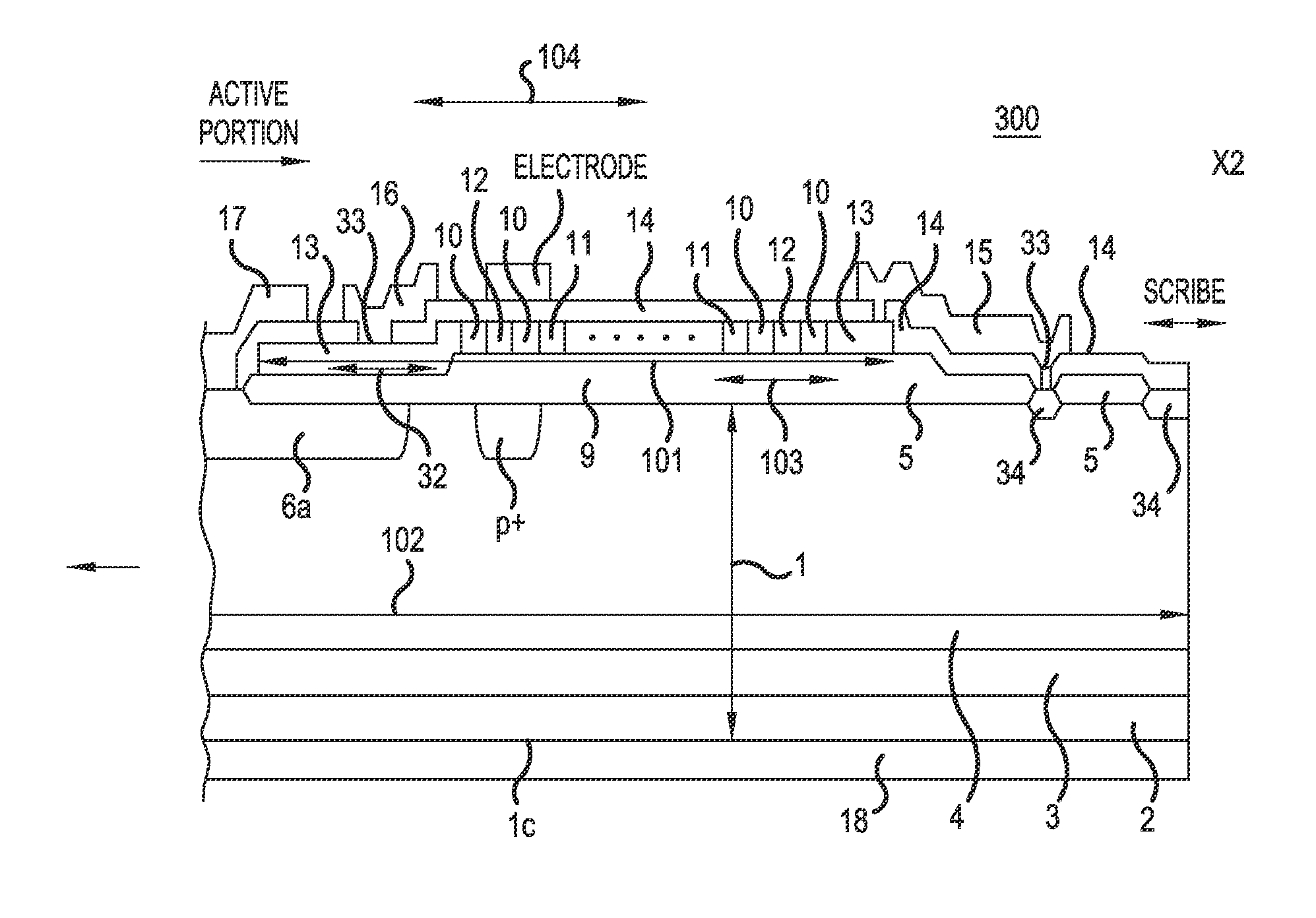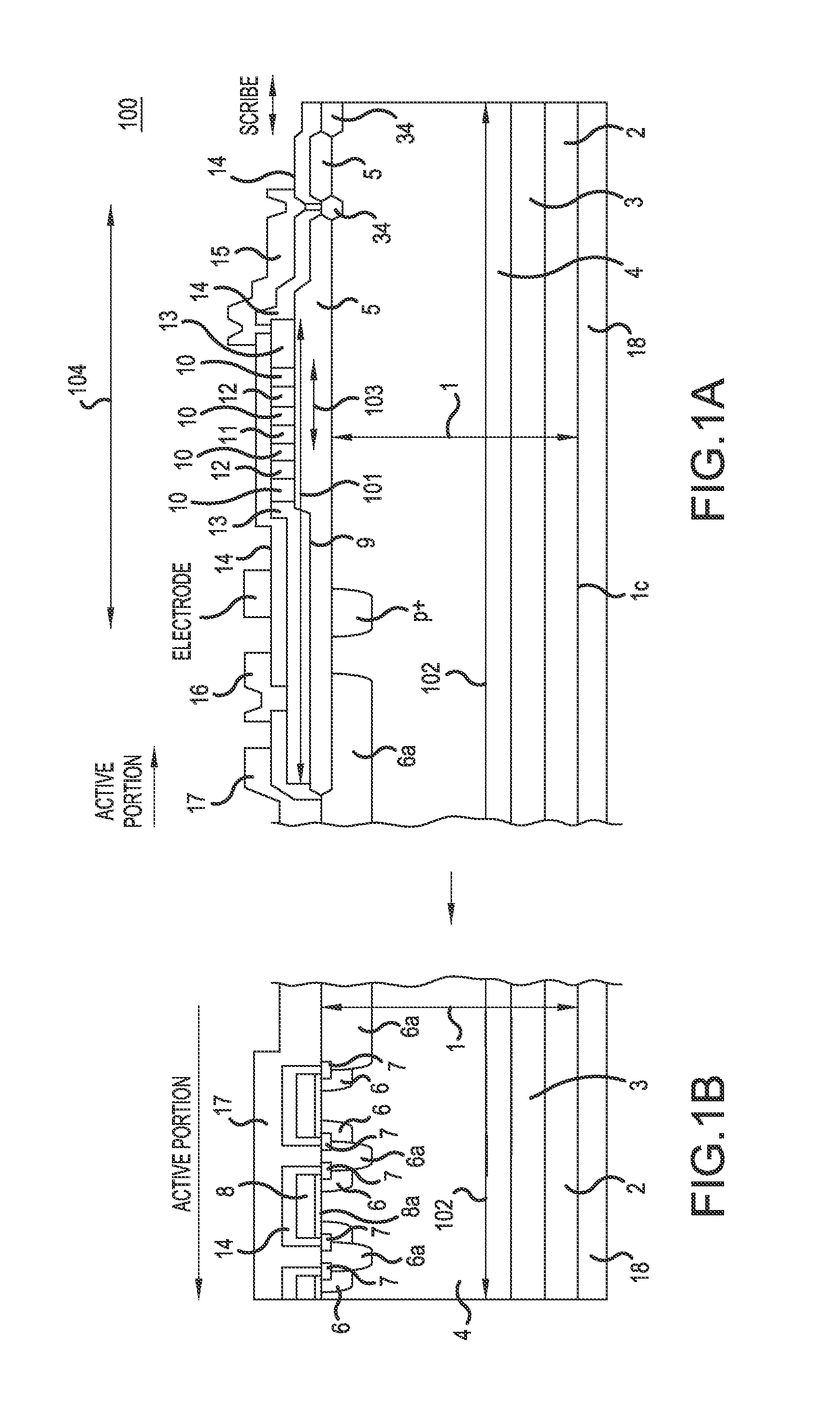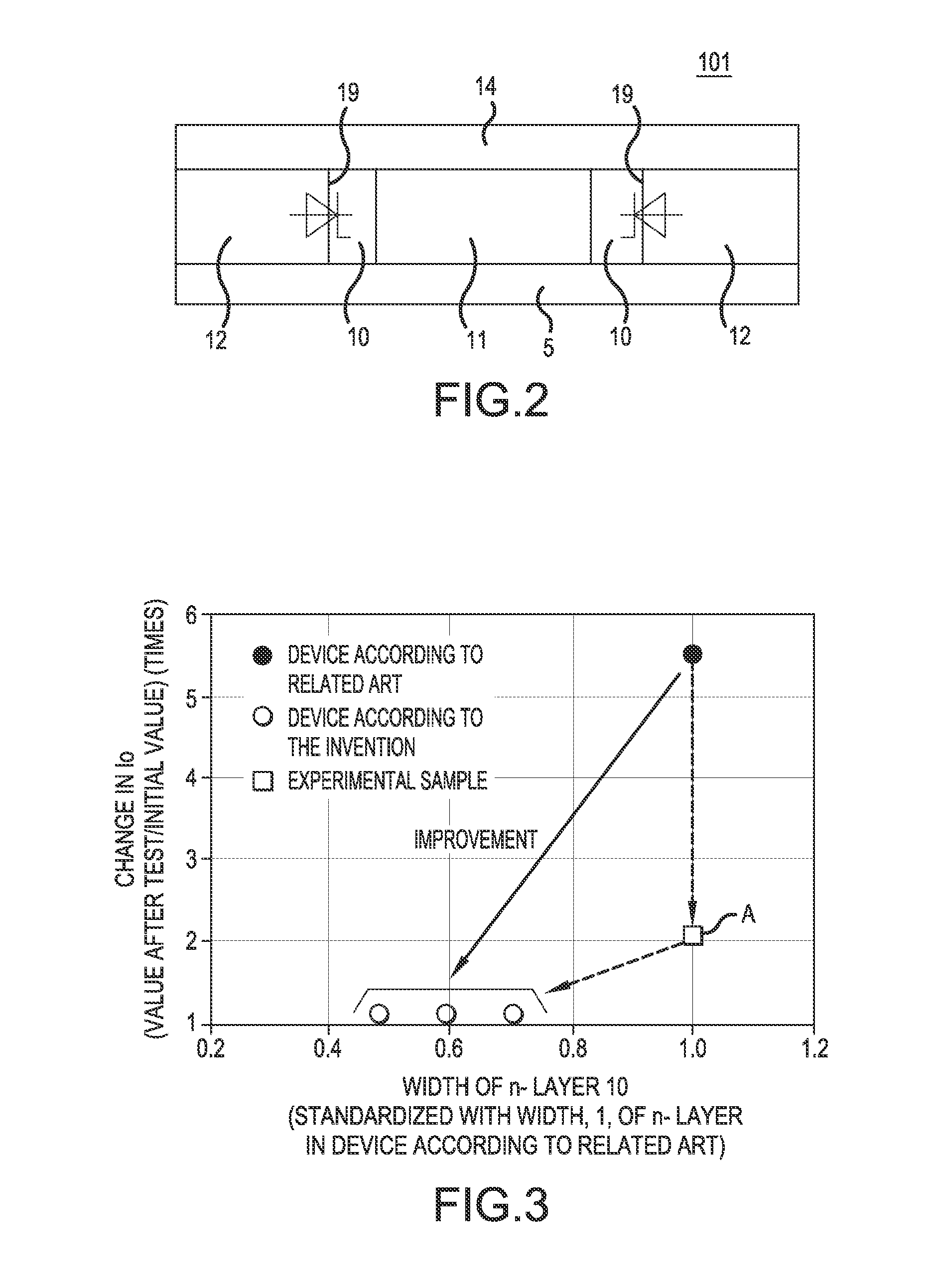Semiconductor device and method for manufacturing semiconductor device
a semiconductor and semiconductor technology, applied in semiconductor devices, diodes, electrical equipment, etc., can solve problems such as breakdown voltage failure, leakage current increase, breakdown voltage failure, etc., to suppress the concentration of electric field and reduce the area of protective diodes
- Summary
- Abstract
- Description
- Claims
- Application Information
AI Technical Summary
Benefits of technology
Problems solved by technology
Method used
Image
Examples
first embodiment
[0049]The structure of a semiconductor device forming an ignition IC of an internal-combustion engine ignition device will be described as an example of the structure of a semiconductor device according to a first embodiment of the invention. Since the circuit structure of the internal-combustion engine ignition device is the same as that of the internal-combustion engine ignition device 700 illustrated in FIG. 5, the description thereof will not be repeated. FIG. 1A is a cross-sectional view illustrating a main portion of the semiconductor device 100 in which a protective diode 101 is formed. FIG. 1B is a cross-sectional view illustrating a main portion in the vicinity of an active portion of the IGBT 102, which is connected to FIG. 1A. As illustrated in FIGS. 1A and 1B, the semiconductor device 100 according to the first embodiment has a structure in which an insulated gate bipolar transistor (IGBT) 102, which is a power semiconductor element, and the protective diode 101, which i...
second embodiment
[0064]Next, a method for manufacturing the protective diode of the semiconductor device according to the first embodiment illustrated in FIGS. 1A and 1B will be described as an example of a method for manufacturing a semiconductor device according to a second embodiment of the invention. FIGS. 4A, 4B, and 4C are diagrams illustrating the main manufacturing processes of the method for manufacturing the semiconductor device according to the second embodiment. Specifically, the manufacturing processes illustrated in FIGS. 4A, 4B, and 4C are manufacturing processes for the protective diode 101 illustrated in FIGS. 1A and 1B.
[0065]First, in FIG. 4A, an epitaxial substrate la obtained by epitaxially growing an n+ layer 3a (which will be the n buffer layer 3) and an n− layer 4a (which will be the n drift layer 4) in this order on the front surface of a thick p-type semiconductor base 2a (which will be the p collector layer 2) whose rear surface has not been ground is prepared. The sum of t...
third embodiment
[0077]Next, the structure of a semiconductor device according to a third embodiment of the invention will be described. FIG. 9 is a plan view illustrating a main portion of a semiconductor device 200 according to the third embodiment of the invention. The semiconductor device 200 according to the third embodiment differs from the semiconductor device according to the first embodiment in that, in a protective diode 105 which is made of a polysilicon layer 9, high-resistance regions 20 are formed at both ends of a basic structure 103 in a direction perpendicular to the direction in which n+ / n− / p+ / n− layers are arranged in a line.
[0078]The high-resistance region 20 is formed in a substantially linear shape which extends from an n+ contact layer 13 which is provided on the inner circumferential side of the protective diode 105 to an n+ contact layer 13 which is provided on the outer circumferential side in the direction in which the layers of the protective diode 105 are arranged in a l...
PUM
 Login to View More
Login to View More Abstract
Description
Claims
Application Information
 Login to View More
Login to View More - R&D
- Intellectual Property
- Life Sciences
- Materials
- Tech Scout
- Unparalleled Data Quality
- Higher Quality Content
- 60% Fewer Hallucinations
Browse by: Latest US Patents, China's latest patents, Technical Efficacy Thesaurus, Application Domain, Technology Topic, Popular Technical Reports.
© 2025 PatSnap. All rights reserved.Legal|Privacy policy|Modern Slavery Act Transparency Statement|Sitemap|About US| Contact US: help@patsnap.com



